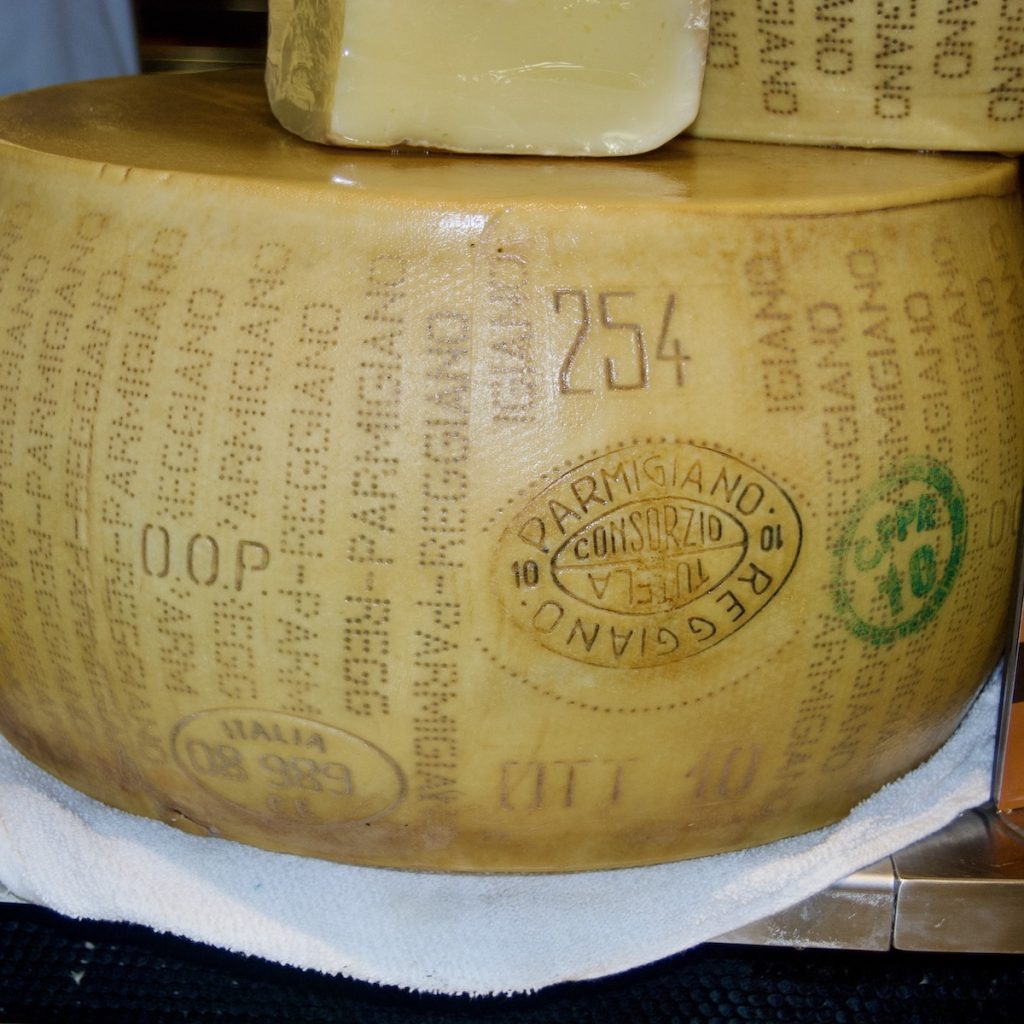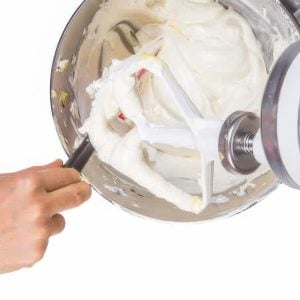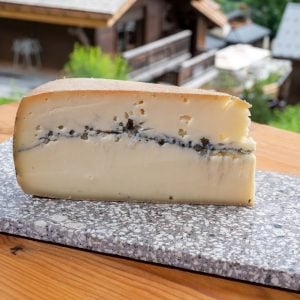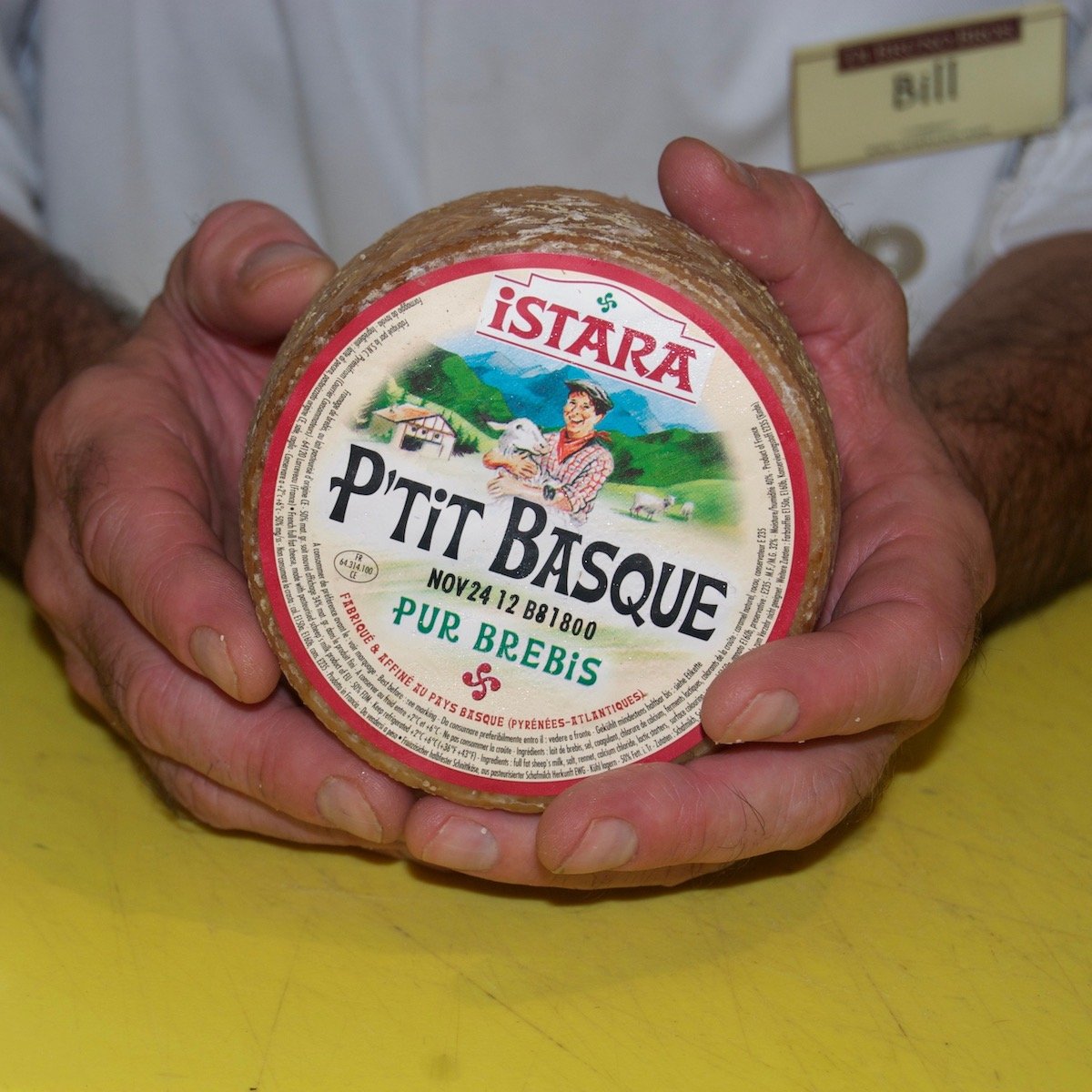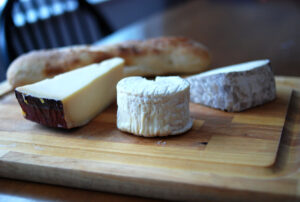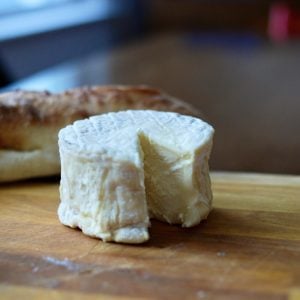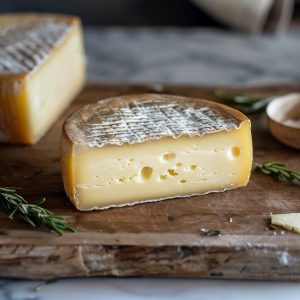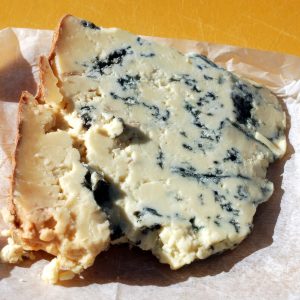The King of Cheese
Parmesan cheese, known formally as Parmigiano-Reggiano, stands as one of the most celebrated cheeses in the world. Made from cow’s milk in specific regions of Italy, this hard, granular cheese boasts a rich history dating back centuries.
Cheese makers craft it using traditional methods, carefully aging wheels for a minimum of 12 months, with some varieties maturing for up to 36 months or more. This aging process develops Parmesan’s signature nutty, savory flavor and crumbly yet slightly creamy texture.
Parmesan shines both as a table cheese and a key ingredient in countless dishes. Chefs and home cooks grate it over pastas, risottos, and salads, adding a burst of umami and depth. Its complex flavor profile also enhances soups, sauces, and even roasted vegetables.
Beyond the kitchen, Parmesan’s distinct aroma and crystalline texture make it a favorite on cheese boards, paired beautifully with fruits, nuts, and wines.
The strict production regulations preserve Parmesan’s authenticity and quality, ensuring every bite delivers that unmistakable taste. Whether freshly grated or savored in chunks, Parmesan cheese continues to inspire culinary creativity worldwide.
Its timeless appeal and versatility keep it at the heart of Italian cuisine and beyond, making it a pantry staple for food lovers everywhere.
Characteristics
Characteristic |
Details |
| Milk Source | Cow’s milk (Reggiana and Frisona breeds) |
| Texture | Hard, granular, crumbly with slight creaminess |
| Aging | Minimum 12 months; commonly 24–36 months or longer |
| Flavor | Nutty, savory, umami-rich, slightly fruity and salty |
| Aroma | Intense, complex, hints of toasted nuts and butter |
| Rind | Natural, hard, thick, golden to straw-colored, branded with official markings |
| Interior | Pale yellow, grainy, with small crunchy protein crystals (tyrosine) |
| Size | Large wheels, approx. 35–45 kg (77–99 lbs), 40–45 cm diameter |
| Versatility | Extremely versatile: grated, shaved, eaten in chunks, melts well in cooking |
| Region | Parma, Reggio Emilia, Modena, Bologna (west of Reno River), Mantua (south of Po River), Italy |
| AOC/Protected Status | Protected Designation of Origin (PDO) |
| Milk Treatment | Raw cow’s milk, partially skimmed naturally by cream separation overnight |
| Coagulation Type | Enzymatic coagulation using calf rennet |
| Shape | Large wheel (round) |
| Color (Interior/Rind) | Interior: pale golden yellow; Rind: natural golden to straw color |
| Shelf Life | Up to 12 months unopened; best within months after opening |
| Serving Temperature | Room temperature (18–22°C or 65–72°F) |
| Traditional Season | Year-round production; historically linked to spring and summer milk richness |
| Diet of Cows | Grazing on local grasses and hay; no silage allowed |
| Culinary Uses | Grated on pasta, risotto, soups; shaved on salads; eaten with fruits/nuts; in sauces, baked dishes |
Serving & Wine Suggestions
Serving Suggestion |
Description |
Wine Pairing |
| Grate over pasta dishes | Adds nutty, savory flavor and richness to pasta | Chianti Classico, Barolo, Verdicchio |
| Sprinkle on risottos | Enhances creaminess and depth in risotto | Soave, Pinot Grigio |
| Add shards or chunks to salads | Provides texture and umami to fresh greens | Verdicchio, Franciacorta |
| Serve on cheese boards | Complements cured meats, nuts, and fruits | Brunello di Montalcino, Prosecco |
| Use in soups and broths | Adds savory complexity to broths and soups | Pinot Grigio, lighter Cabernet Sauvignon |
| Melt into creamy sauces | Enriches sauces with umami and depth | Chardonnay, Merlot (lighter styles) |
| Pair with crusty bread and olive oil | Creates a simple, flavorful snack | Prosecco, Franciacorta |
| Combine with roasted vegetables | Finishing touch that boosts roasted veggie flavor | Chianti, Merlot |
| Shave thin slices over carpaccio | Adds salty, nutty contrast to delicate dishes | Barolo, Brunello di Montalcino |
| Incorporate into baked dishes | Enhances gratins and casseroles with deep flavor | Chianti, Soave |
| Dessert pairing (with Parmesan shards) | Pair Parmesan with dried fruit or nuts for contrast | |
Popular Dishes Featuring Parmesan Cheese
Dish Name |
Description |
| Caesar Salad | A crisp romaine lettuce salad tossed with creamy anchovy-garlic dressing, crunchy croutons, and generous shavings of Parmesan for a salty, nutty finish. |
| Spaghetti Carbonara | A Roman pasta dish made with eggs, black pepper, pancetta, and grated Parmesan, which melts into a silky sauce coating the pasta. |
| Baked Parmesan Tomatoes | Halved tomatoes topped with a mixture of breadcrumbs, herbs, and Parmesan, then baked until golden and bubbling. |
| Chicken Parmesan | Breaded and fried chicken cutlets topped with marinara sauce and melted mozzarella and Parmesan cheese, then baked until bubbly. |
| Parmesan Risotto | Creamy Arborio rice dish slowly cooked in broth and finished with butter and grated Parmesan for a luxurious, rich texture. |
| Eggplant Parmesan | Layers of breaded, fried eggplant slices with marinara, mozzarella, and Parmesan cheese, baked until bubbling and crisp. |
| Parmesan-Crusted Tilapia | Mild white fish fillets coated in a Parmesan breadcrumb crust, baked or pan-fried until golden and crisp. |
| Garlic Parmesan Wings | Chicken wings tossed in a buttery garlic-Parmesan sauce, typically roasted or deep-fried for maximum flavor and crunch. |
| Parmesan Polenta | Creamy cornmeal porridge enriched with butter and Parmesan, often served with braised meats or roasted vegetables. |
| Parmesan Crisps (Frico) | Thin rounds of baked or pan-fried Parmesan that form crispy, savory chips—great for snacking or garnishing soups and salads. |
Types of Parmesan
Cheese Name |
Country |
Protected Designation of Origin (PDO) Status |
| Parmigiano Reggiano | Italy | Yes (PDO) – Protected in the EU |
| Grana Padano | Italy | Yes (PDO) – Similar to Parmigiano, with differences in aging and production rules |
| Reggianito | Argentina | No – Inspired by Parmigiano, made by Italian immigrants |
| Domestic Parmesan (U.S.) | United States | No – Not regulated, varies by brand |
| Parmesão | Brazil | No – Local interpretation of Parmesan |
| Gran Moravia | Czech Republic (by Italian company Brazzale) | No – Not PDO; similar style |
| Parmigiana (Australia) | Australia | No – Generic name; not under PDO |
| Parmesan (Canada) | Canada | No – Generic use allowed outside EU |
| Grana Trentino | Italy | Yes (PDO) – Less common, alpine version of Grana Padano |
| Stravecchio (extra-aged Parmigiano) | Italy | Yes (as part of Parmigiano Reggiano PDO) – Refers to age (36+ months) |
Parmesan Cheese Frequently Asked Questions
What does it look, taste and smell like?
Parmesan cheese has a hard, pale yellow rind and a pale yellow interior with a granular texture. Its sharp, nutty flavor becomes more complex and piquant as it ages. The flavor is often described as slightly fruity, with hints of nuts and a slightly salty finish.
It has a hard, granular texture that is slightly crumbly. It can be grated finely or shaved into thin slices. Its strong, robust flavor pairs well with various dishes.
Parmesan cheese has a strong, sharp, and nutty flavor that becomes more complex and piquant as it ages. It is often described as slightly fruity, with hints of nuts and a slightly salty finish. The flavor of the cheese is influenced by the type of milk used, the aging process, and the methods used to make it.
Regarding smell, Parmesan cheese has a strong and distinctive aroma often described as nutty and slightly pungent. The aroma of the cheese is influenced by the type of milk used and the aging process, and it can vary depending on the specific type of Parmesan cheese.
Is Parmigiana Reggiano the Same as Parmesan cheese?
Parmigiano-Reggiano and Parmesan cheese are often used interchangeably, but they are not exactly the same. Parmigiano-Reggiano, also known as Parmesan cheese, is a hard, nutty cheese that is native to Italy and is made from cow’s milk.
It is typically aged for at least one year. It has a Protected Designation of Origin (PDO) status, meaning it can only be made in specific regions of Italy using specific methods. Parmigiano-Reggiano cheese is known for its sharp, nutty flavor and granular texture, and it is often considered to be the highest quality Parmesan cheese.
On the other hand, Parmesan cheese is a generic term that is often used to refer to any cheese similar to Parmigiano-Reggiano. It may be made from cow’s milk or a mixture of cow’s milk and other types of milk, such as skim milk or milk protein concentrate, and may contain additives and preservatives.
Parmesan cheese made outside of Italy may be labeled as “Parmesan,” but it may not have the same flavor or quality as Parmigiano-Reggiano cheese.
Parmigiano-Reggiano and Parmesan cheese are similar in terms of their flavor and texture. Still, Parmigiano-Reggiano is considered to be of higher quality and has a richer, more complex flavor than generic Parmesan cheese.
How does Parmigiana Reggiano compare to Pecorino cheese?
Parmesan cheese and Pecorino are both hard, aged cheeses native to Italy. They both have a sharp, nutty flavor and a granular texture, but they are made from different types of milk and have some distinct differences.
Parmigiano-Reggiano is made from cow’s milk and is aged for at least one year. It has a Protected Designation of Origin (PDO) status, meaning it can only be made in specific regions of Italy using specific methods. Parmesan cheese has a sharp, nutty flavor and a granular texture, and it is often used as a grating cheese or shaved over dishes for added flavor and texture.
On the other hand, Pecorino is made from sheep’s milk and is aged for a minimum of five months. It is a hard cheese made in several regions of Italy, including Tuscany, Lazio, and Sardinia. Pecorino has a sharp, salty flavor and a slightly softer texture than Parmesan cheese, and it is often used as a grating cheese or shaved over dishes for added flavor and texture.
Parmigiano-Reggiano and Pecorino are delicious and versatile cheeses enjoyed worldwide. They have similar flavors and textures, but they are made from different types of milk and have some distinct differences. Whether you prefer Parmigiano-Reggiano or Pecorino depends on your preferences and the specific recipe you are using.
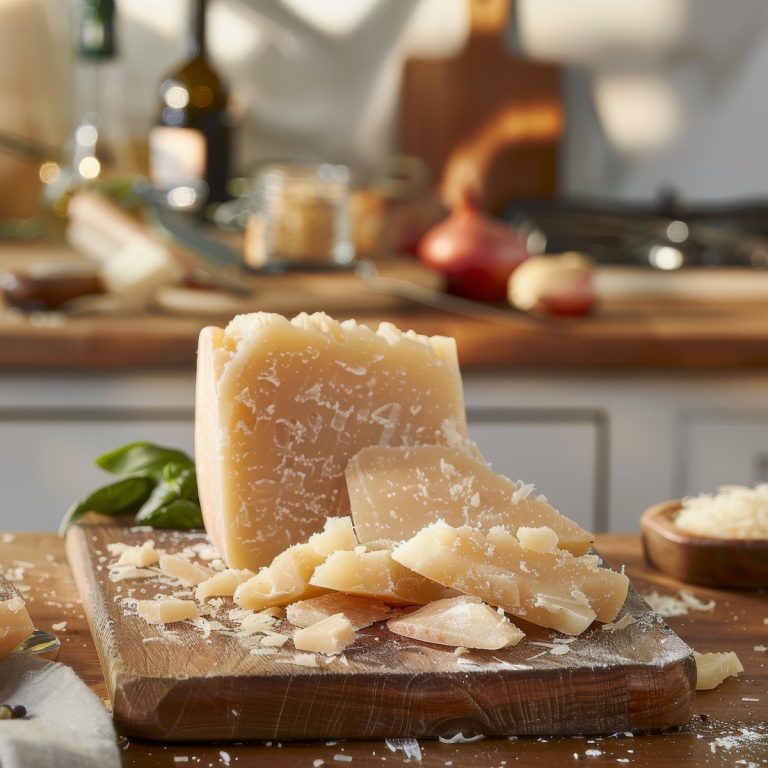
Does Parmesan cheese have to come from Italy?
Parmesan cheese, also known as Parmigiano-Reggiano, is typically made in Italy’s Parma and Reggio Emilia regions and has a Protected Designation of Origin (PDO) status, which means that it can only be made in these specific regions using specific methods.
However, other types of cheese similar to Parmesan cheese are made in other countries and may be labeled “Parmesan.” These cheeses may be made using similar methods and ingredients, but they may not have the same flavor or quality as Parmesan cheese made in Italy.
If you want to be sure that you are purchasing authentic Parmesan cheese, it is a good idea to look for cheese labeled as “Parmigiano-Reggiano” or “Grana Padano,” which are both PDO cheeses made in Italy. These cheeses have been produced using traditional methods and are subject to strict quality control standards, which helps to ensure their authenticity and flavor.
Is it worth the money?
Whether or not Parmigiano-Reggiano is worth the money is a subjective decision that will depend on your personal preferences and budget. Some people may feel that the high quality and unique flavor of Parmigiano-Reggiano make it worth the extra cost. In contrast, others may prefer to save money by choosing a cheaper alternative.
In general, Parmigiano-Reggiano is considered to be a premium cheese and is typically more expensive than other types of cheese. However, it is also a versatile cheese that can be used in various dishes and can add flavor and depth to your cooking. If you enjoy the flavor of Parmigiano-Reggiano and are willing to pay a little extra for it, it may be worth the investment.
Remember that Parmigiano-Reggiano is a hard cheese that can be grated or shaved into thin slices and used in various dishes, so a little bit goes a long way.
How does it compare to the stuff in the green can?
The cheese that is often sold in a green can or plastic container and labeled as “Parmesan cheese” or “grated Parmesan” may not be authentic. This cheese is often made from a mixture of cow’s milk and other types of milk, such as skim milk or milk protein concentrate, and may contain additives and preservatives.
It may also be made using methods different from authentic Parmesan cheese and may not be aged for as long. As a result, it may not have the same flavor or quality as authentic Parmesan cheese. In general, authentic Parmesan cheese is considered of higher quality and has a richer, more complex flavor than the cheese sold in a green can or plastic container.
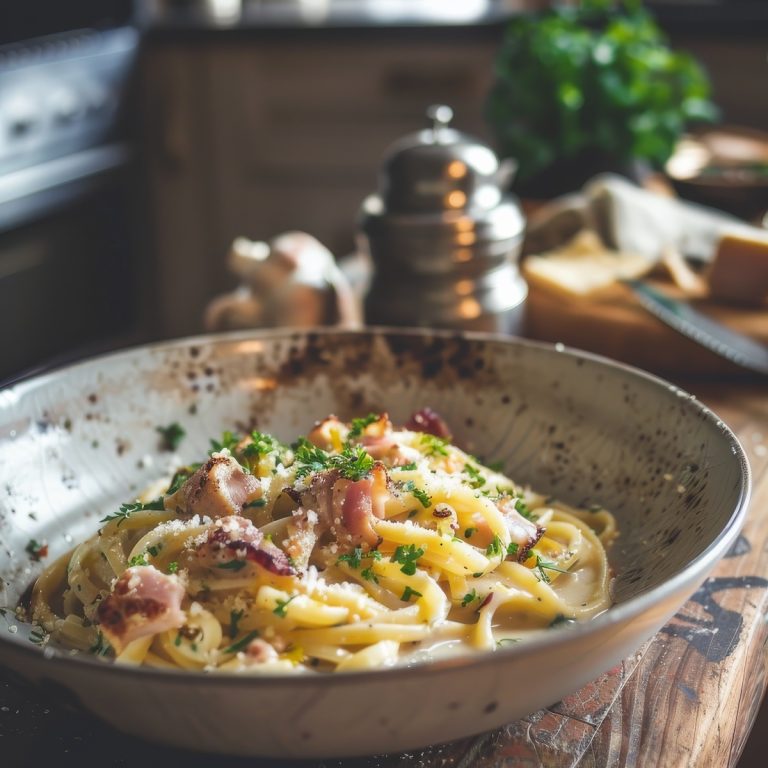
Tips for buying
When shopping for parmesan cheese, here are a few things to consider:
- First, choose a high-quality brand: Look for brands that use traditional production methods and milk from grass-fed cows.
- Look for the “Parmigiano-Reggiano” label. Parmesan cheese labeled “Parmigiano-Reggiano” must be produced in a specific region of Italy using specific methods, so it is generally considered higher quality.
- Consider the age of the cheese: Parmesan cheese can be aged for up to three years, and the longer it is aged, the more intense and flavorful it will be. However, older Parmesan can also be more expensive.
- Decide between grated or block parmesan: Grated parmesan is convenient to use, but it can lose its flavor more quickly than a block of cheese. A block of Parmesan will last longer, but it must be grated or shaved before use.
- Check the expiration date. Choose parmesan cheese with a long shelf life to keep it fresh for as long as possible.
Tips for storing
Parmesan cheese is best stored in the refrigerator, which will keep for several months. Here are a few tips for storing parmesan cheese:
- Wrap the cheese tightly: Use plastic wrap or aluminum foil to wrap the cheese tightly, removing as much air as possible. This will help prevent the cheese from drying out and becoming crumbly.
- Store the cheese in the cheese drawer: Parmesan cheese is best stored in the cheese drawer of your refrigerator, which is typically the most humid area.
- Don’t store the cheese near strong-smelling foods: Parmesan cheese is quite porous, so it can absorb the flavors of other foods stored near it. Store it away from strongly scented foods to prevent the cheese from taking on unwanted flavors.
- Grate the cheese as needed: If you have a block of parmesan cheese, it is best to grate or shave the amount you need for a recipe rather than grating the entire block at once. Grated parmesan cheese will dry out more quickly than a block of cheese, so it is best to use it within a few days of grating.
- Freeze the cheese if you won’t be using it for a while: If you have a large block of parmesan cheese that you won’t be using for a while, you can freeze it to extend its shelf life. Just wrap the cheese tightly in plastic wrap or aluminum foil and place it in a resealable freezer bag before storing it in the freezer. Frozen parmesan cheese will keep for up to six months.
Is Parmesan nutritious?
It is a good source of protein and contains several essential nutrients, including calcium, phosphorus, and vitamin B12. Some studies have also suggested that Parmesan cheese may have antimicrobial properties and may help reduce the risk of certain types of infections.
However, it is essential to remember that Parmesan cheese is high in sodium and fat and should be consumed in moderation as part of a well-balanced diet. Like all cheeses, Parmesan cheese is best consumed as part of a varied and healthy diet that includes various foods.
Regarding fat content, Parmesan cheese is relatively high in fat compared to other cheese types. According to the United States Department of Agriculture (USDA), a one-ounce (28 gram) serving of Parmesan cheese contains approximately 8 grams of fat, of which 5 grams is saturated fat. This is equivalent to approximately 10% of the recommended daily value for fat and 8% for saturated fat based on a 2,000-calorie diet.
Suppose you are concerned about your sodium or fat intake. In that case, you may consider using Parmesan cheese in smaller quantities or choosing a lower-fat or lower-sodium cheese as an alternative. It is also a good idea to speak with a healthcare professional or a registered dietitian if you have specific concerns about your diet and nutrition.
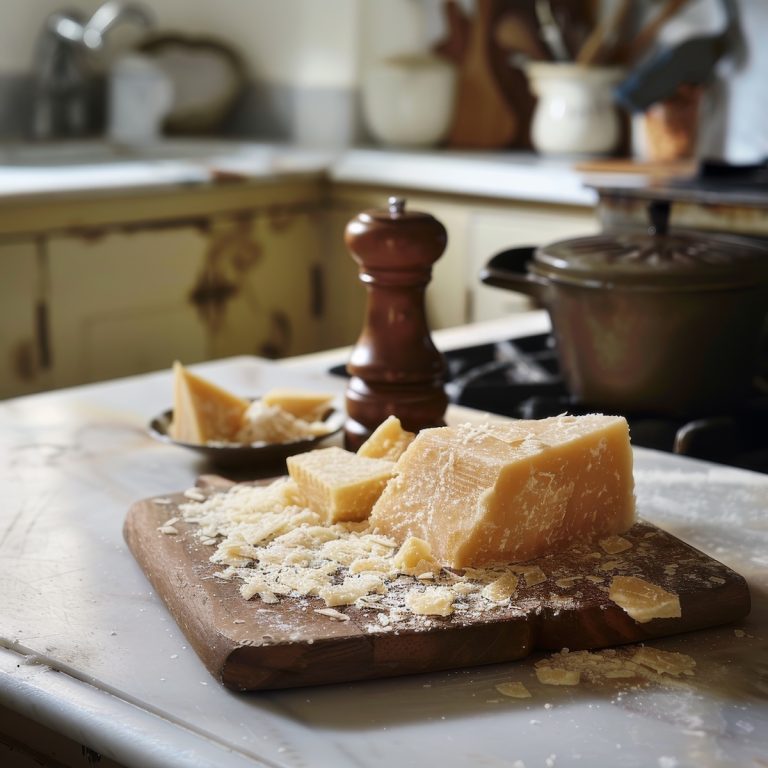
History
The origins of Parmesan cheese can be traced back to the 13th century when it was first made in Italy’s Parma and Reggio Emilia regions. Monks originally made the cheese to preserve milk, and it quickly gained popularity due to its rich, nutty flavor and granular texture.
Over the centuries, the production of Parmesan cheese has evolved and become more refined. In the 19th century, the Parmigiano-Reggiano cheese consortium was formed, which established strict guidelines for producing Parmesan cheese and helped ensure its quality and consistency. Today, Parmesan cheese is protected by a Protected Designation of Origin (PDO) status, which means that it can only be made in specific regions of Italy using specific methods.
Parmesan cheese has become a beloved and iconic cheese worldwide, and it is used in various dishes in many cuisines. It is a versatile cheese that can be grated over dishes, used as an ingredient in sauces, or eaten on its own as a snack. It is also a popular topping for pizza and is often used in Italian cuisine.
Despite its widespread popularity, Parmesan cheese remains deeply rooted in its Italian origins and is still made using traditional methods that have been passed down for generations. As a result, it is a true culinary masterpiece that is enjoyed by food lovers all over the world.
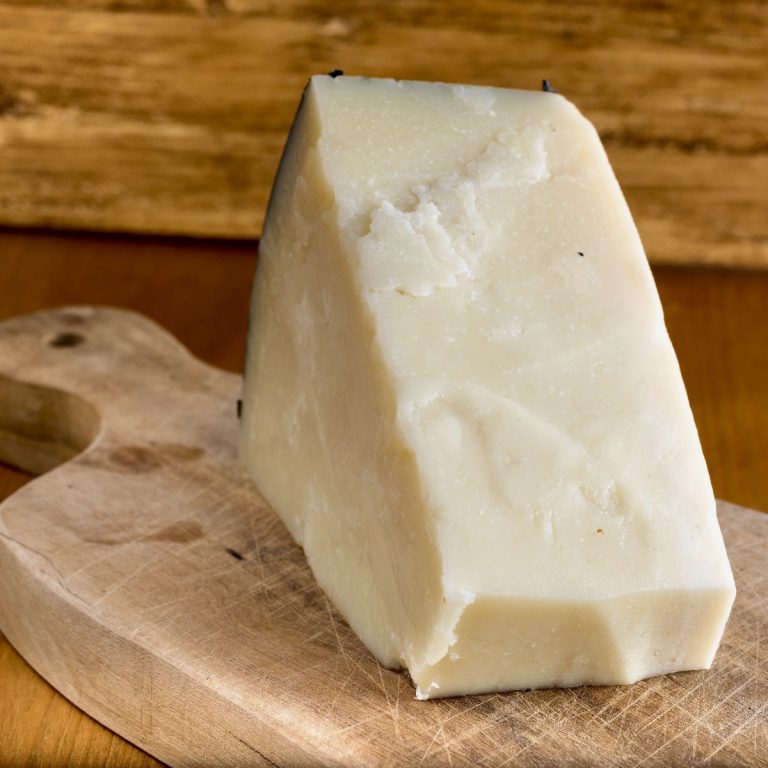
How Is Parmesan Cheese Made
Cheesemakers begin making Parmesan cheese by collecting fresh, raw cow’s milk from the evening milking and allowing it to rest overnight. By morning, the cream naturally rises to the top. They skim off this cream and mix the partially skimmed milk with whole milk from the morning milking. This blend fills large copper vats.
Next, they gently heat the milk and add natural calf rennet and whey starter from the previous day’s batch. This causes the milk to coagulate. Once the curd forms, they break it into tiny granules using a large balloon whisk called a spino. The curds and whey are then heated again to about 131°F (55°C), causing the curds to contract and sink to the bottom.
After settling, the cheesemakers scoop out the curd mass and wrap it in cheesecloth. They press it into round molds with a stencil that imprints the name “Parmigiano Reggiano” and other identifying codes onto the rind. After 1–2 days, they place the cheese wheels in a brine bath, where the wheels absorb salt over several weeks.
Finally, the wheels age on wooden shelves for at least 12 months, during which they are cleaned and turned regularly. Only the best wheels receive the official Parmigiano Reggiano stamp.

